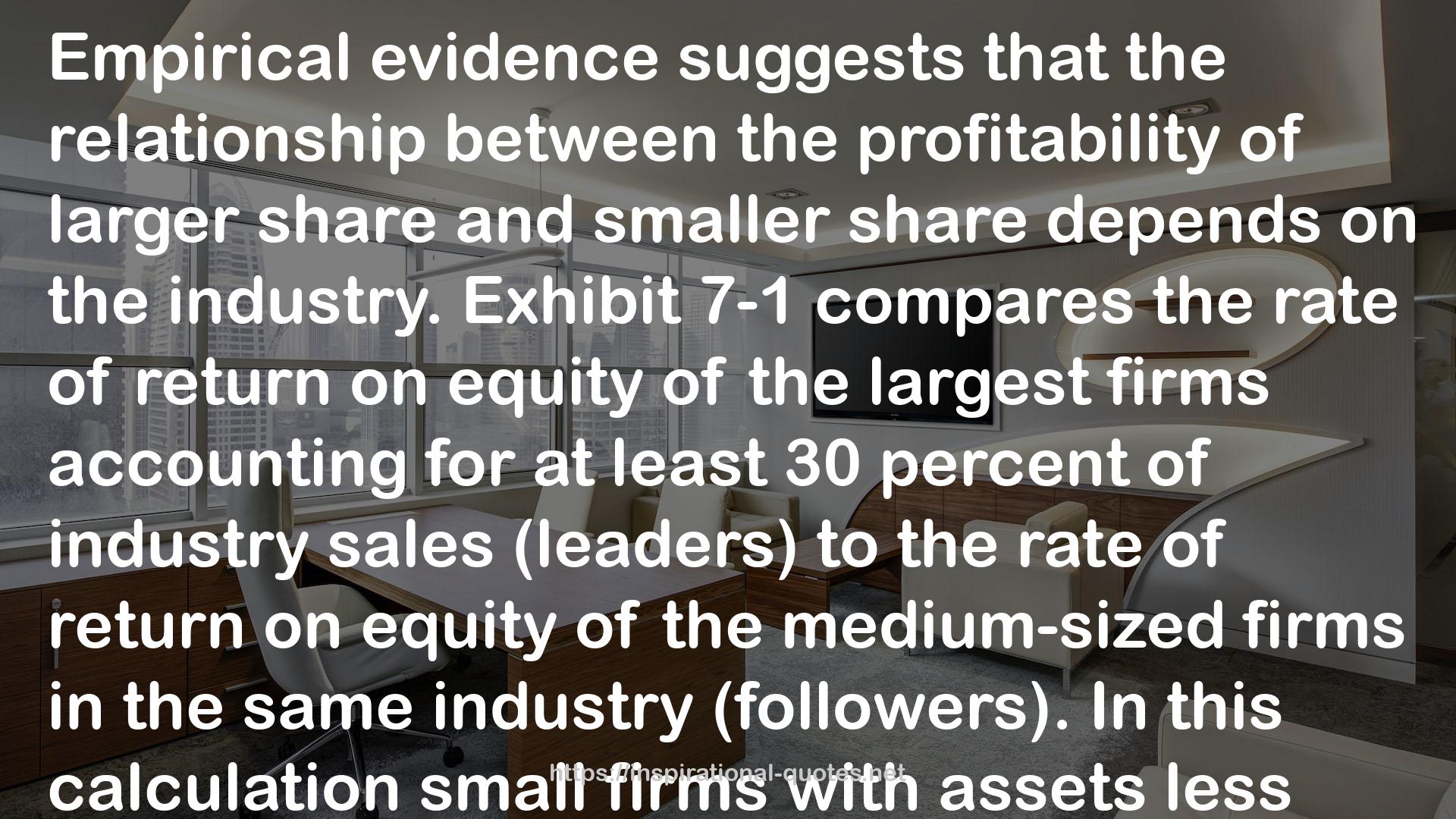" Empirical evidence suggests that the relationship between the profitability of larger share and smaller share depends on the industry. Exhibit 7-1 compares the rate of return on equity of the largest firms accounting for at least 30 percent of industry sales (leaders) to the rate of return on equity of the medium-sized firms in the same industry (followers). In this calculation small firms with assets less than $500,000 were excluded. Although some of the industries in the sample are overly broad, it is striking that followers were noticeably more profitable than leaders in 15 of 38 industries. The industries in which the followers’ rates of return were higher appear generally to be those where economies of scale are either not great or absent (clothing, footwear, pottery, meat products, carpets) and/or those that are highly segmented (optical, medical and ophthalmic goods, liquor, periodicals, carpets, and toys and sporting goods). The industries in which leaders’ rates of return are higher seem to be generally those with heavy advertising (soap; perfumes; soft drinks; grain mill products, i.e., cereal; cutlery) and/or research outlays and production economies of scale (radio and television, drugs, photographic equipment). This outcome is as we would expect. "
― Michael E. Porter , Competitive Strategy: Techniques for Analyzing Industries and Competitors
